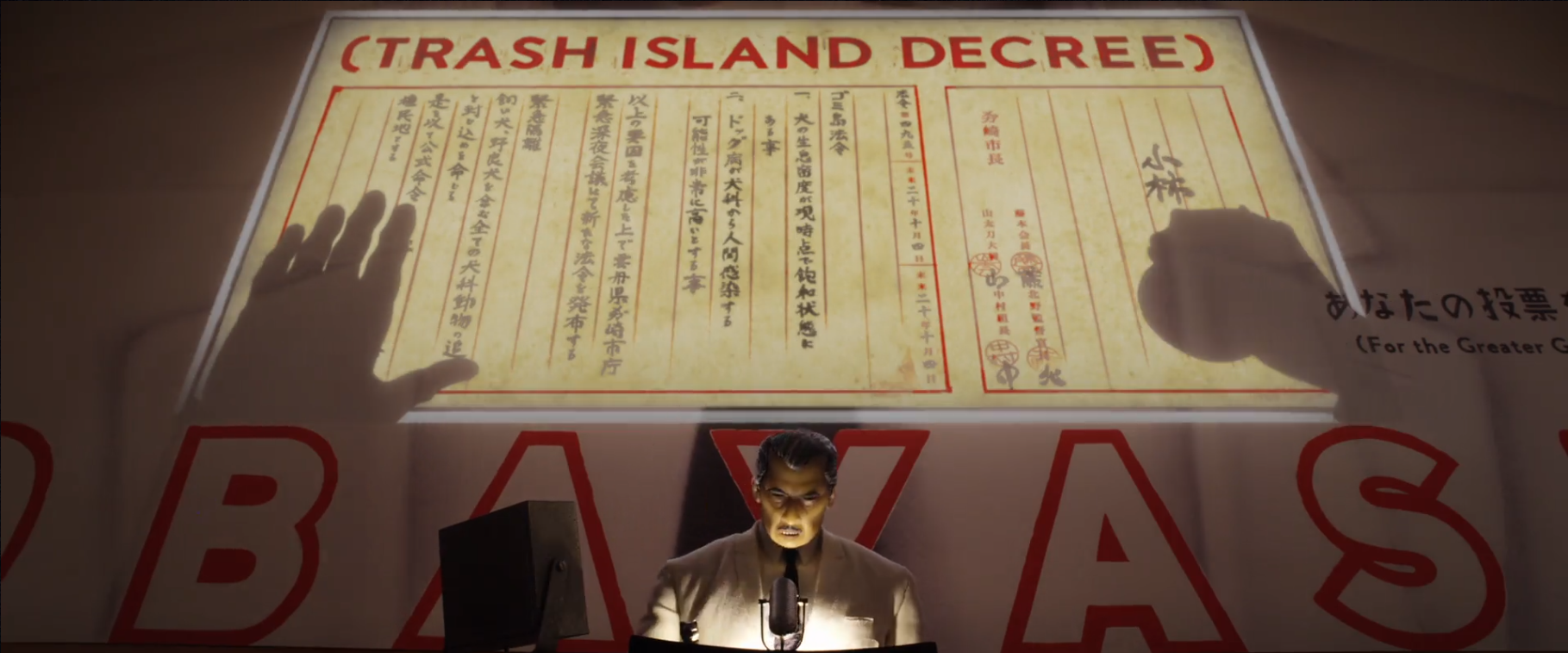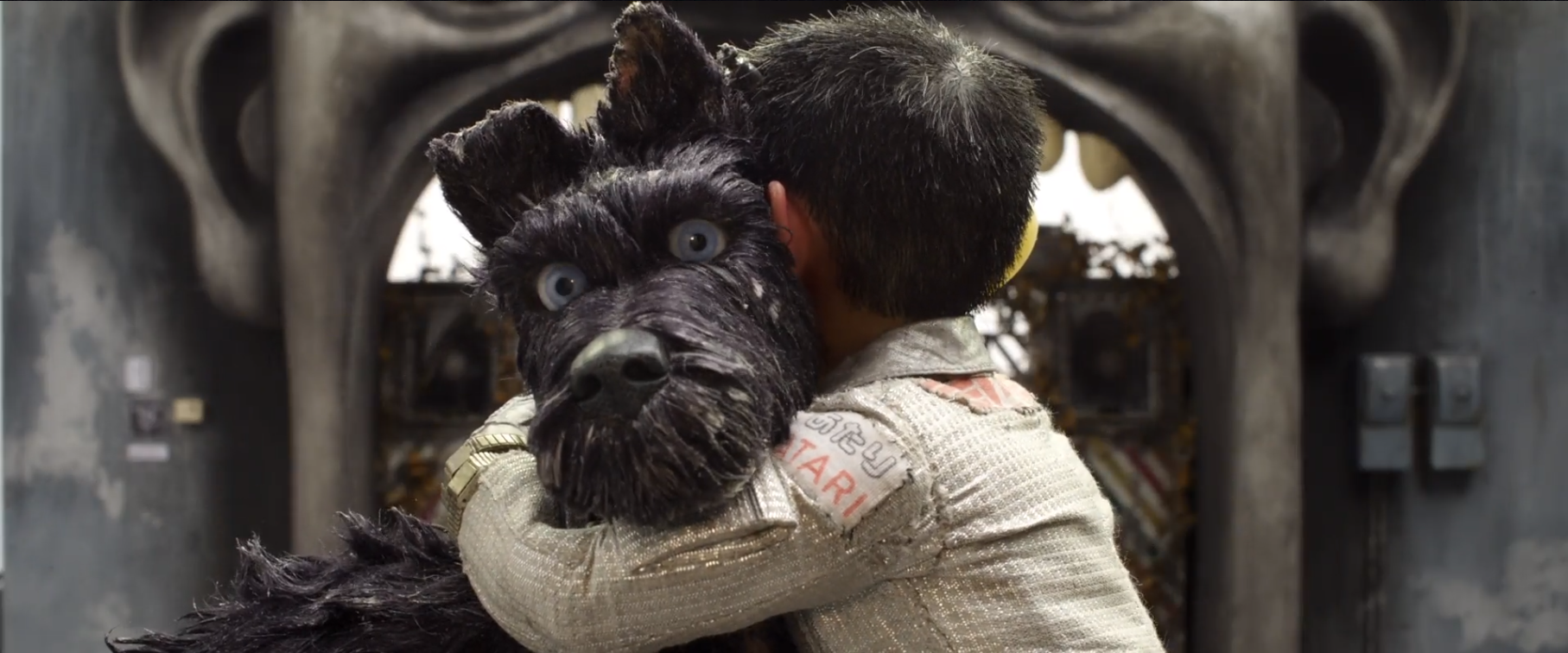CinemaTech is Eric Emin Wood’s periodic look at how pop culture depicts the world of tech.
Isle of Dogs, writer-director Wes Anderson’s latest exercise in fastidious world-building, isn’t explicitly about technology, but that doesn’t keep it from advancing one of the more convincing anti-tech screeds I’ve seen in animation.
I’m not surprised for two reasons: animation as a medium (and the type of children’s movie it’s so often used for) has a long history of longing for the “good old days” over the present, and in seeking to evoke the hand-made quality of the Rankin-Bass stop-motion specials that so clearly inspired him, Anderson and his animators have endeavoured to make Isle of Dogs look as low-fi as possible.
So I didn’t bat an eye when the film’s main villain turned out to be in favour not only of eradicating all canines, but of seeking to replace them with robotic counterparts.

Mayor Kobayashi, you see, is descended from a family of cat-lovers, which makes him an anomaly in Megasaki City, the fictional Japanese prefecture he runs – at least until an outbreak of dog flu gives him the excuse he needs to order every one of Megasaki’s dogs banished to nearby Trash Island.

A banishment that even extends to his nephew Atari’s beloved protector, Spots.

While little of the film’s Japanese dialogue is subtitled (only the dogs’ barks are translated into English), we can surmise that 12-year-old Atari does not share his uncle’s opinion of dogs, since he steals a plane and flies to Trash Island to find Spots, and after crash-landing, is rescued by five dogs – Rex (Ed Norton), King (Bob Balaban), Duke (Jeff Goldblum), Boss (Bill Murray), and Chief (Bryan Cranston) – who decide to help him out.
Though Isle of Dogs is not explicitly a children’s movie, it follows the beats of the genre: If I tell you, for example, that Chief is a former stray and reluctant to fraternize with humans, you would guess that of the five lead dogs he ultimately forges the deepest bond with Atari, and you would be right.

Then there’s the fate of Spots (Liev Schreiber) himself: Initially confined to a sealed cage, Spots fears being attacked by Trash Island’s legendary pack of cannibal dogs – and the film does an excellent job of selling that fear.

But Spots – and Chief, and Atari – have nothing to fear from the “cannibals,” which turn out be a pack of unjustly maligned strays who ultimately rise against Kobayashi and his horribly unfair decree.
Instead, their enemy, whenever the sequence calls for one, is a pack of razor-toothed robotic dogs which, Kobayashi seems to imply in his untranslated Japanese, are more loyal to their masters, more deadly to their enemies, and more protective of their charges – including Atari- than the real McCoy.

So while Atari is frantically looking for Spots, Mayor Kobayashi does his best to replace the deported canines with what he no doubt considers their superior metallic counterparts, crossing the point of no return when he covers up the existence of a dog flu cure by poisoning the scientist who created it (like I said: Not explicitly a children’s movie), then reveals to his underlings that after being re-elected he plans to order the total extermination of all dogs on Trash Island.
Of course Chief, Spots, and the other dogs don’t allow this to happen, because they ultimately prove themselves more capable of protecting Atari than a pack of robots.
And of course Kobayashi’s plans are exposed (by a Greta Gerwig-voiced American exchange student, a regrettable choice more articulate viewers than me have lamented), and of course he regrets his actions after Atari is injured, sacrificing one of his kidneys to save his nephew.
The point, Isle of Dogs appears to conclude with only slightly more subtlety than a mallet to the head, is that however effective the robot dogs of 20 years from now might be, they’ll never replace our current pets.
It’s a lesson Boston Dynamics and its ilk would do well to learn.





